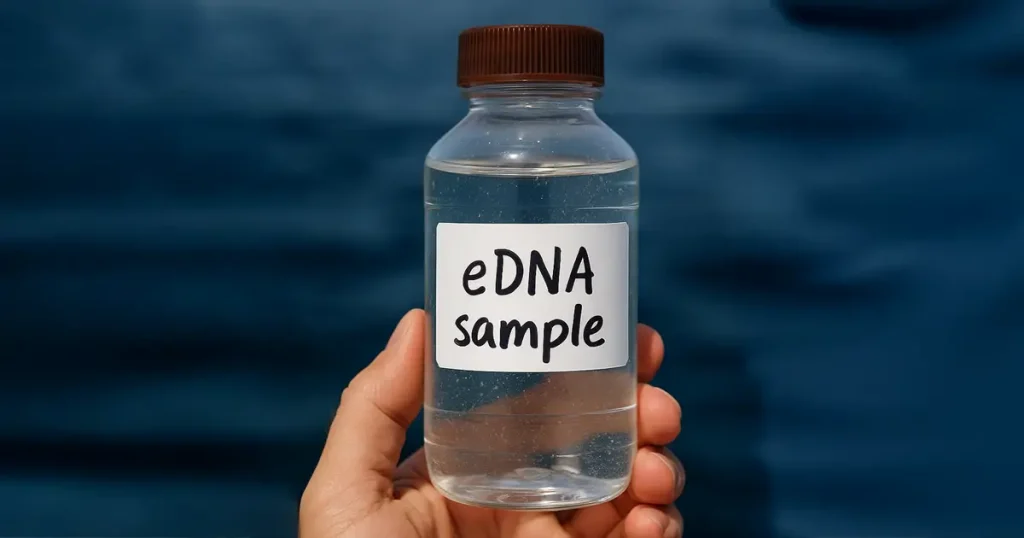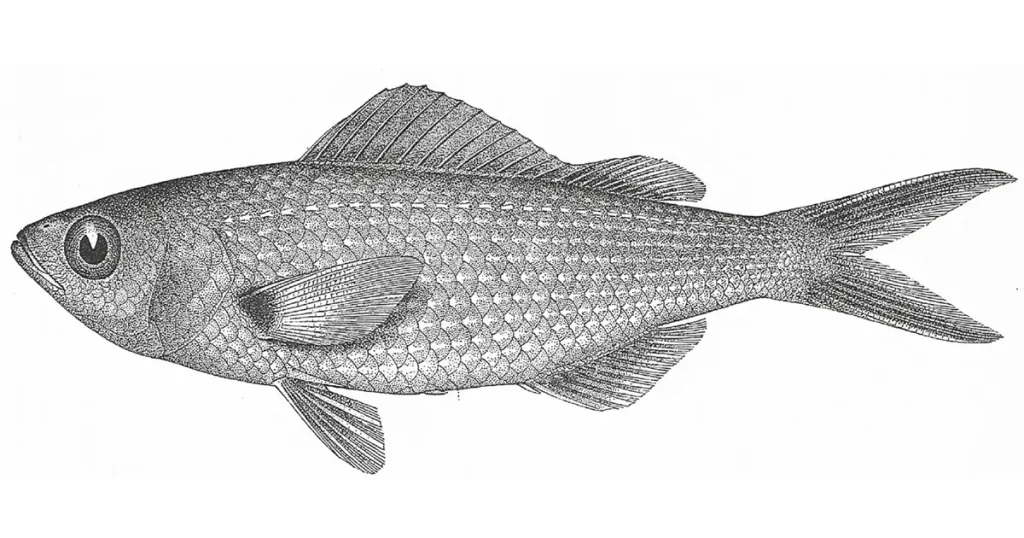20 Giant Tortoises on Wolf Volcano Live in the Most Extreme Conditions in the World
by Xavier Castro
[Versión en español abajo]
Climbing 5,600 feet above the shores of Isabela Island, Wolf Volcano is the highest peak in the Galapagos Islands. It’s also home to its very own unique species of tortoise, the Wolf Volcano Giant Tortoise (Chelonoidis becki). Although the species is listed as vulnerable by the International Union for Conservation of Nature (IUCN) Red List, thanks to intensive conservation efforts over recent decades, the population of these tortoises is now thriving. An estimated 10,000 live around the crater and rim of the volcano, breeding naturally and helping to restore and preserve the delicate ecosystems in the area. But there’s one group of tortoises on Wolf Volcano that stands out.
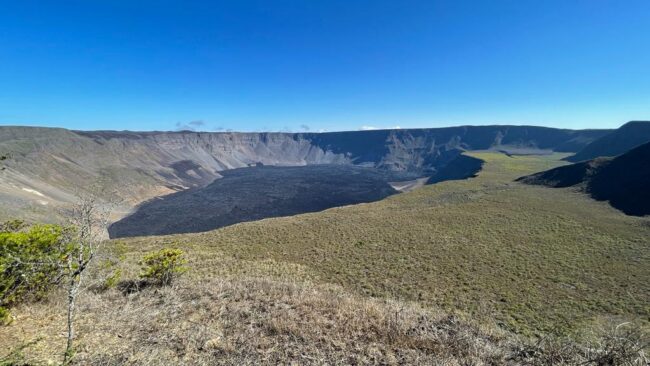
A creep of 20 tortoises is completely isolated from the rest of the population. They’re healthy and safe, with access to food and water, but they’ll never again rejoin their peers. They’re trapped.
Many years ago, though scientists do not know precisely when, these 20 tortoises had the misfortune of being in the wrong place at the wrong time. When one section of the volcano collapsed, likely due to natural erosion, the group fell along with it. They’re now completely isolated on a small, two-square-kilometer plateau inside the crater, blocked by impassable crater walls hundreds of feet high. But the tortoises have made a home, and they will live the rest of their lives here.
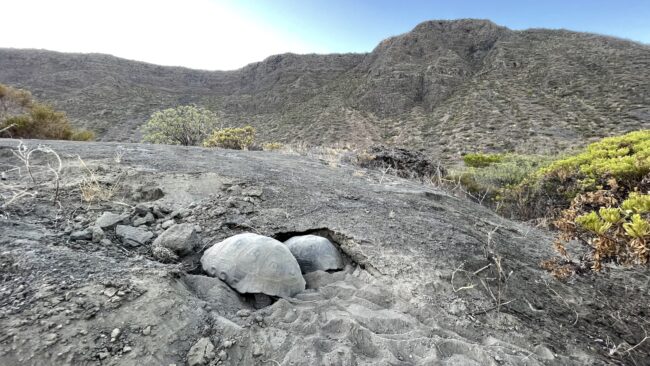
This is one of the most inhospitable environments in the Archipelago. Although herbaceous vegetation, cacti, and small leatherleaf trees provide a relatively abundant food source, water is scarce. Tortoises are only able to access drinking water during the rainy season from January to April, and an extreme drought during this critical time of year can have severe consequences, both for water intake and plant growth that limits food supply.
Despite these extreme conditions, natural reproduction and young tortoises have been observed on the plateau – another sign of the incredible resilience of these mega-herbivores. They’re able to withstand long periods of scarcity while taking advantage of the short periods of rain and food to store water and fat reserves. Then, during the rest of the year when they lose access to food and water, they decrease their activity to slow metabolism, allowing them to survive on these reserves.
However, according to Galápagos Conservancy Conservation Manager Dr. Jorge Carrion, a group of tortoises living in such a small area comes with risks. “If the population on this plateau continues to increase, and especially if there are extended periods without food or water, it’s logical to assume that the natural process of survival of the fittest will play out,” said Dr. Carrion. “There’s simply not enough resources there to sustain a growing population indefinitely. But this condition is a part of nature, so we’ll continue doing everything in our power to protect this species.”
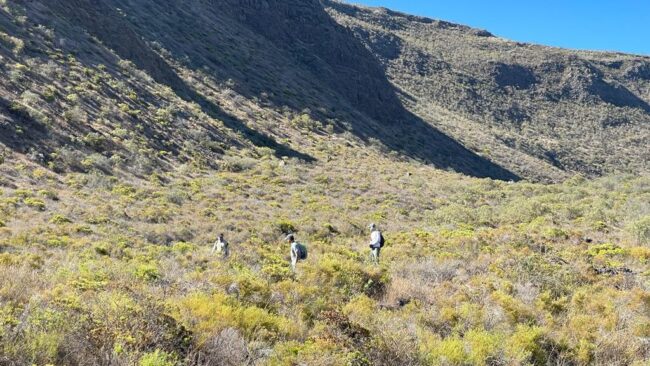
Al menos 20 tortugas de Galápagos viven en las condiciones más extremas del mundo
A 1,707 metros sobre el nivel del mar (msnm), en las lejanas islas Galápagos habitan las tortugas gigantes de la especie Chelonoidis becki, únicas en el mundo y según los criterios de la Lista Roja de la Unión Internacional para la Conservación de la Naturaleza (UICN) está catalogada como vulnerable.
Existen aproximadamente 10,000 tortugas becki, pero insólitamente unos 20 ejemplares viven separados de sus congéneres y sobresalen por exhibir una increíble capacidad de supervivencia, atrapadas en un área de unos 2 km2 en el interior del cráter del volcán Wolf, uno de los más grandes y activos del archipiélago. Pues al parecer años atrás, quizás a consecuencia de la erosión se dio un hundimiento en un costado del cráter del volcán, producto de lo cual estos quelonios quedaron aislados en una especie de meseta y como tal, obligados a vivir el resto de sus vidas en el interior del cráter.
Algunas áreas de este inhóspito lugar están cubiertas de vegetación herbácea, cactus y pequeños árboles de arrayancillo (Maytenus octogona) que les sirven de alimento, pero su principal desafío es conseguir el líquido vital, pues lo obtienen únicamente cuando llueve, lo que sucede solamente en la temporada invernal entre los meses de enero y abril, tiempo en el que almacenan reservas.
Por eso, una extrema sequía puede tener severos impactos en estas tortugas, conllevaría falta de alimento, incidiendo negativamente en su supervivencia. Sin embargo, a pesar de las condiciones extremas, se ha registrado reproducción natural de estos individuos en el interior del cráter, mostrándonos su capacidad para soportar períodos de escacez y a la vez su capacidad de aprovechar los cortos períodos lluvia y alimentos.
Al no poder salir del cráter del volcán, se ven obligadas a sobrevivir con la poca agua y alimento que disponen. Pero lo cierto es que “cuando es época de lluvias y como tal la vegetación reverdece, las tortugas gigantes consumen gran cantidad de alimento, lo cual les permite incrementar sus reservas de grasa y cuando llega la sequía disminuyen su actividad y metabolismo, logrando sobrevivir al usar esas reservas”, señaló el experto en tortugas Wacho Tapia, Director de Conservación de Galápagos Conservancy.
Estas tortugas están totalmente aisladas del resto de su especie, pues no tienen forma de salir de este lugar, debido a las empinadas paredes que rodean su hábitat, que fácilmente superan los 200 metros de altura.
Para Jorge Carrión, Gerente de Conservación de Galápagos Conservancy, este grupo de quelonios están en constante riesgo, no solo por las condiciones extremas en las que viven sino por el hecho mismo de habitar en un volcán activo. “Su condición es parte de la naturaleza, sin embargo, hacemos todo lo que está en nuestras manos para proteger la especie”, destacó Carrión.
Galápagos Conservancy seguirá brindando asistencia técnica y científica a fin de expandir los esfuerzos de conservación de estas y todas las especies de tortugas gigantes en el archipiélago de Galápagos.


